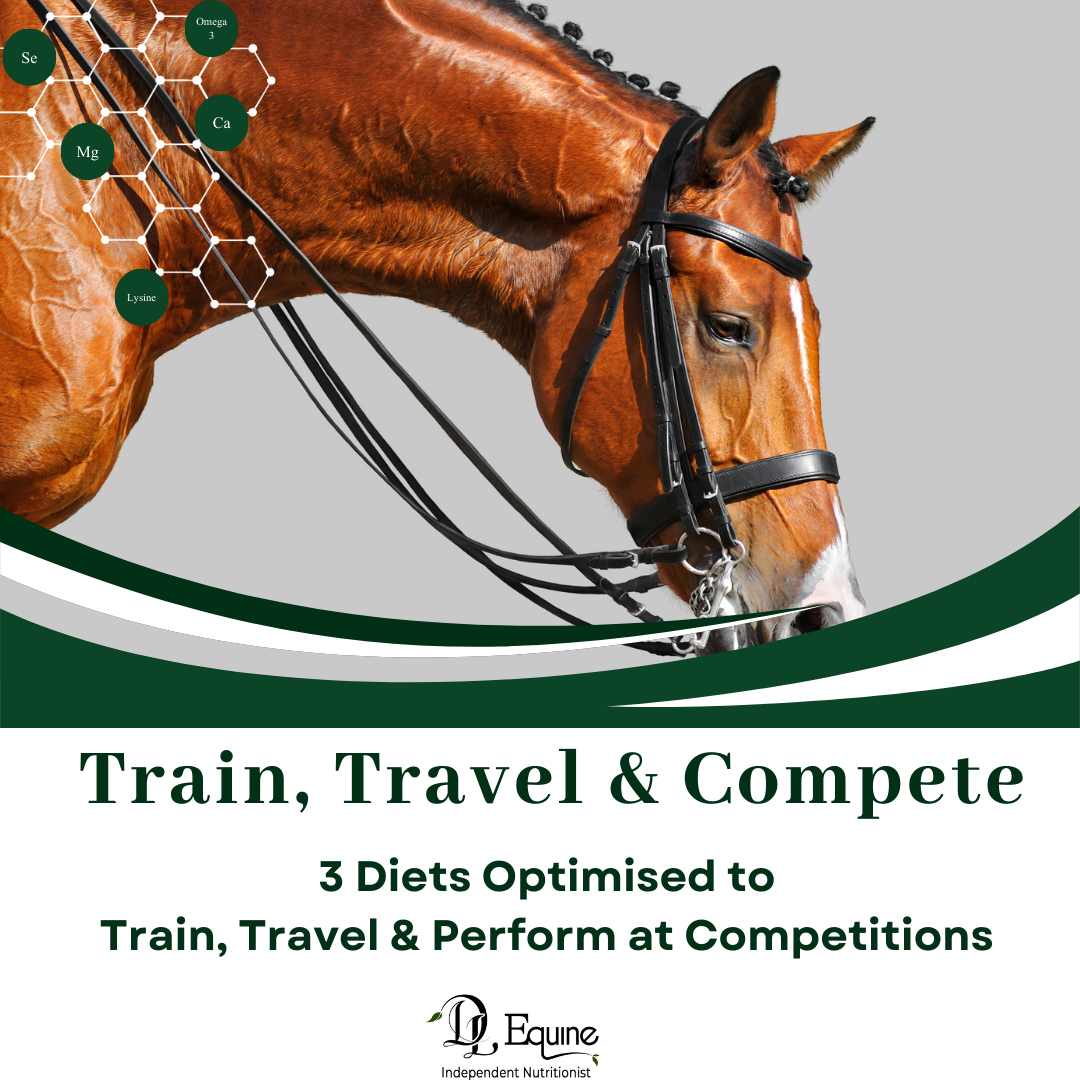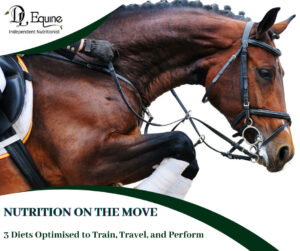The research cited below is by Dr Ben Sykes BSc BVMS MSc MBA DipACVIM PhD FHEA
Professor Ben Sykes is a world leading expert on Equine Gastric Ulcer Syndrome (EGUS) He has pioneered research on EGUS with a focus on Equine Glandular Gastric Disease (EGGD) and has numerous peer reviewed publications to his credit including being the lead author of the current international consensus statement on EGUS in the adult horse. Prof Sykes is a veterinarian with over 26 years clinical experience who is boarded with the American College of Veterinary Internal Medicine. He has performed the newest research has that has identified and updated methods on managing our ulcer prone performance horses.
If you wish to read the full statement on the research read here:
https://pubmed.ncbi.nlm.nih.gov/37048517/
https://www.ncbi.nlm.nih.gov/pmc/articles/PMC10093336/
Read below for parts of the statement selected for important points.
Equine Gastric Ulcer Syndrome (EGUS) is a term that has been used since 1999, initially being used to describe all gastric mucosal disease in horses. Since this time, the identification of two distinct main disease entities of the equine gastric mucosa have been described under the umbrella of EGUS; these are Equine Squamous Gastric Disease (ESGD) and Equine Glandular Gastric Disease (EGGD). In 2015 the European College of Equine Internal Medicine (ECEIM) released a consensus statement defining these disease entities. This document highlighted the lack of evidence surrounding EGGD compared to ESGD, and identified knowledge gaps for further research to be directed. Subsequently, many studies on EGGD have been published, especially on pathophysiology, diagnosis, and treatment. This article updates current knowledge on both ESGD and EGGD as understanding has evolved since the last large-scale review.
Prevalence
The prevalence of ESGD and EGGD has been reported extensively elsewhere Prevalences for ESGD vary by group sampled and exercise program. Prevalences of 37–52%, 38–56% and 48% in Thoroughbred, Standardbred and endurance racehorses, respectively, while out of training have been reported. These increase up to 100%, 72–88% and 57–93% respectively when these same populations are in training.
The prevalence of EGGD is less well documented and more variable between populations. Reports include 25–65% in Thoroughbred racehorses, 47% in a mixed population of Standardbred and Thoroughbred racehorses, 16–33% in endurance horses…..
Risk Factors
Risk factors specifically for EGGD are less well documented. Exercising ≥ 5 days per week, racing below expectation, and trainer are risk factors for EGGD in Thoroughbred racehorses [28].
Increased days in work and actively competing are risk factors in Warmblood showjumpers [8]. Housing in single pens has also been associated with an increased risk of EGGD [37].
The prevalence of EGGD doubles in endurance horses during the competition season, when compared to the inter-season period [13]. Collectively with the increased prevalence observed in domesticated horses, when compared with feral horses [26], this suggests that intensive management plays a role in increased EGGD risk, although via different mechanisms than for ESGD. …
The nutritional risk factors associated with ESGD have remained consistent since 2015. Specific risk factors include lower hay provision and consumption, lower meal number per day and higher grain and starch feeding [9,18,30,37,40,45,46].
Horses that had access to some pasture turnout were less likely to have ESGD, with horses turned out with other horses having a further decreased risk, in one study [40]. Conversely, pasture turnout was not found to be protective against ESGD in other populations [46,47]. Pasture provision likely plays a multifactorial role in disease pathophysiology that will be discussed later. ……….
….It is hypothesized that stress plays a role in the pathophysiology of EGGD [28], and if so, this might have an association with behavior. …The relationship between stress and ESGD is less well-defined; one study showed an inverse correlation between hair cortisol and ESGD grade, suggesting that long-term stress is associated with ESGD….
Equine Squamous Gastric Disease
The understanding of primary ESGD pathophysiology has not changed significantly in the years since the ECEIM consensus [1]. Management factors that increase the acid exposure of the squamous mucosa predispose to the development of ESGD [52].
….By-products of bacterial fermentation of carbohydrates, such as lactic acid and volatile fatty acids, perpetuate the damage caused by hydrochloric acid, when fed in large volumes that are unlikely to be seen clinically [3,77]. It should be remembered that pasture can be a significant source of Non-Structural Carbohydrates (NSCs) [78].
The effect of pasture in the pathophysiology of ESGD is likely multifactorial, which might explain the variability of study results with some showing pasture turnout as protective [40] and others finding no effect [46,47]. …
Specific factors in the relationship between ESGD and pasture are not defined in equids at this time. Likely factors include the NSC content, fiber quantity and fiber composition of the pasture provided. The importance of fiber in the pathogenesis of ESGD is likely two-fold; by increasing the saliva produced by chewing, which has a buffering effect on stomach acid, and its ability to create a ‘roughage ball’ in the stomach to limit acid splashing. Therefore, it follows that not all fiber will have the same effect, with fiber size likely being an important factor, as it is in creating a ruminal mat and increasing time masticating in cattle [80]. ….
It is also possible that other factors associated with pasture turnout are associated with risk reduction, such as increased socialization [40], display of natural behaviors and stress reduction.
Exercise increases the exposure of the squamous mucosa to acid due to increased abdominal pressure and stomach contraction [81]. In fitting with this, prevalence and ESGD score is associated with the intensity of long-duration exercise in Thoroughbreds [19,82,83] and distance of ride in endurance horses [13]….
Equine Glandular Gastric Disease
Conversely, the pathophysiology of EGGD remains poorly understood. It has been hypothesized that the damage to the glandular mucosa in cases of EGGD is due to a loss of normal defense mechanisms to physiologic acid [1]…
In horses, there is evidence to suggest that EGGD is a form of gastritis, identified by histopathology [67,86,87,88]. … [89]. Further work is needed to deepen the understanding of inflammation in EGGD pathophysiology….
Management
Increased days of work per week is a risk factor for EGGD in both Thoroughbred racehorse and Warmblood showjumper populations [8,28]. The prevalence of EGGD doubles in endurance horses during the competition season [13]. These findings suggest that exercise plays a role in the pathophysiology of disease. A proposed hypothesis for this is the disruption of normal blood flow to the stomach during exercise, with exercise acting as a physiological stressor for the glandular mucosa [115].
… One proposed mechanism is through environmental stressors with the domestication and management of horses potentially playing a role in the pathophysiology of disease…
Diagnosis
Gastroscopy is consistent and reliable in the diagnosis of squamous disease…
… EGGD…factors, such as owner or trainer reported complaints and clinical signs and response to therapy, should be considered alongside gastroscopy to assess the potential relevance of gross mucosal changes….
Treatment
… Treatment for ESGD remains as previously recommended [1] with proton pump inhibitors (PPIs), such as omeprazole, as the cornerstone of therapy and other agents, such as H2 pump blockers, used if resolution is not seen…
… oral omeprazole monotherapy has lower rates of EGGD healing, at 14–25% [29,135,138]….
… Oral omeprazole has superior bioavailability when fed to fasted animals [141].
It is also a pro-drug that is absorbed into systemic circulation and requires activation in response to feeding before reversibly binding and inhibiting proton pumps in the stomach [142]. As such, it is preferred that omeprazole is given after a period of fasting and prior to a meal…
… 141. Sykes B., Underwood C., McGowan C., Mills P. Pharmacokinetics of intravenous, plain oral and enteric-coated oral omeprazole in the horse. J. Vet. Pharmacol. 2015;38:130–136. doi: 10.1111/jvp.12169…
Management
The management factors that have the most impact in the prevention of ESGD are roughage, exercise and the NSC content of the diet. Providing ad libitum roughage has been a longstanding recommendation for the prevention of ESGD [1]; however, horses have been shown to have a circadian rhythm of foraging [144,182,183] and pasture turnout has been shown to have inconsistent effects on ESGD [30,40,47].
…The authors recommend that at least 2% BWT/per day of good quality roughage should be consumed. Importantly, the simple provision of ad libitum roughage does not ensure adequate intake, and one simple, early step in investigating unexplained ESGD is to measure the actual roughage intake to ensure that this threshold is being met…
…Both timing and duration of exercise play an important role in ESGD risk. The timing of exercise should be considered when implementing a preventative strategy for ESGD and it is logical that horses should be exercised when there is maximal intra-gastric buffering….
…minimalization of NSC intake is considered a principle of good equine nutrition [1], supported by one study that demonstrated a decrease in both ESGD and EGGD in horses with dietary starch reduction compared to controls [185]…
Summary in simple terms:
ESGD = squamous region ulcers
EGGD = Glandular region ulcers
Higher prevalence of EGGD in Warmbloods and Thoroughbreds.
Higher rates of exercise increases prevalence of EGUS.
High feeding rates of carbohydrates (grain) increase incidence of ESGD – due to fermentation by product lactic acid increase the damage caused by hydrochloric acid causing ulcers.
Pasture can contain high rates of NSC that can perpetuate ESGD.
Pasture turnout time decreases ESGD but no effect on EGGD.
Stress increases incidence of EGGD.
Chewing long stemmed fibre creates a fibre matt that can prevent ESGD.
Diagnosis is by behaviour signs and scope to identify region and severity.
Treatment is by nutrition, omeprazole, and sucralfate.
Omeprazole has 3 x efficacy when fed to overnight fasted horse!






